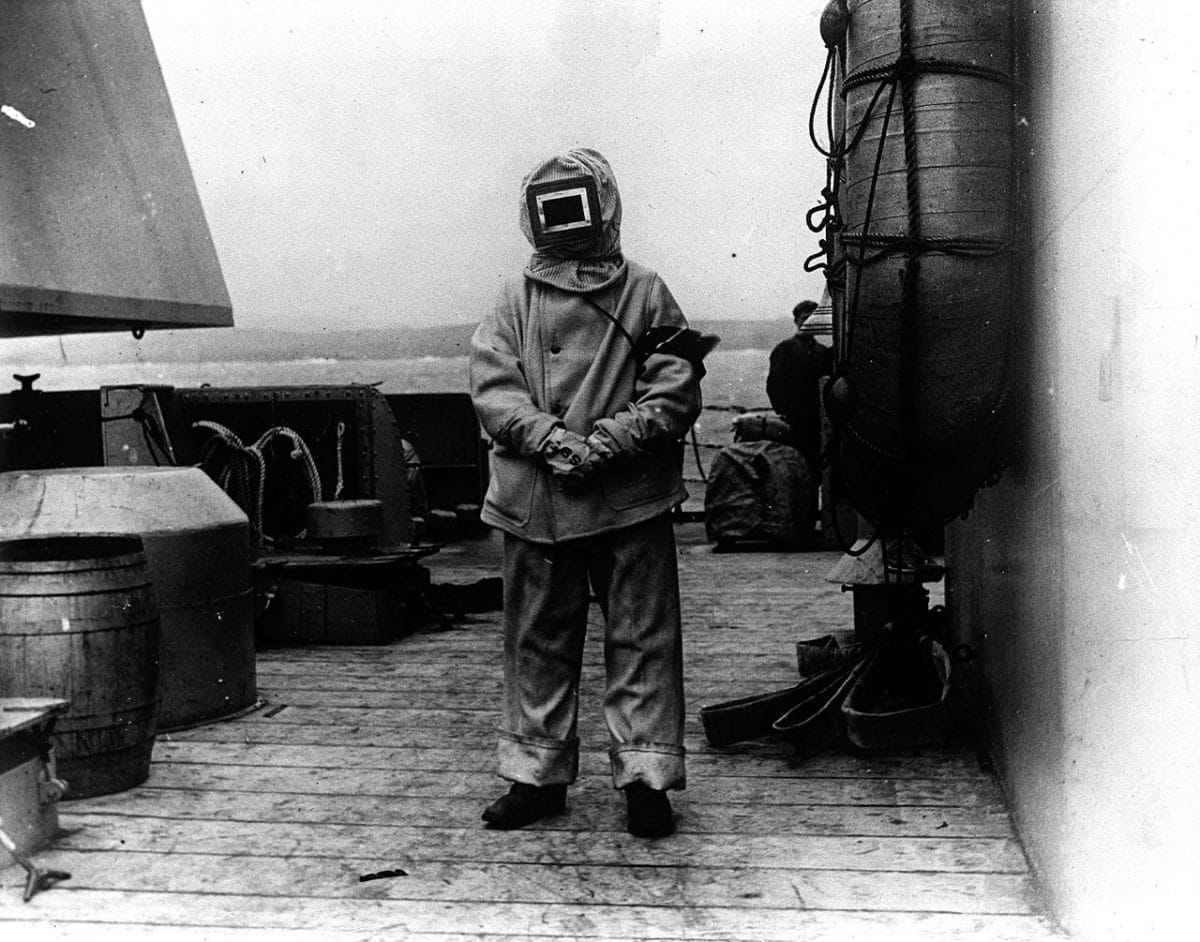A Short History of the Hazmat Suit
The hazmat suit has been around for over 500 years. The first known full body coverage suit designed to protect the wearer from biological agents was developed in the 14th century.
lague doctors were given the dangerous task of entering people’s homes and confirming they were afflicted with the bubonic plague. These suits were the only thing stopping them from catching the plague, which was an almost guaranteed death sentence.
Hazmat Suits in World War I
400 years later, protective suits designed to prevent contact and inhalation of poisonous gas were created for military use during World War I. Mustard gas required a gas mask and standard thick military garb to protect soldiers.
However, as WWI progressed, more advanced nerve agents were developed that were capable of penetrating bare skin. The response was to develop sealed full body suits with a built-in breathing apparatus that was impermeable to poison gas. The designs were similar to the 14th century plague doctor suits.

World War II and Beyond
The modern civilian version of the hazmat suit went into production in 1940 by an American private company called MSA.
After World War II, militaries needed to find a way to protect their soldiers from biological and radioactive attacks.
This lead to the creation of the NBC suit. This stands for Nuclear – Biological – Chemical suit.
The NBC, or “noddy suit” as they were known in the British forces, was designed so that it could be quickly pulled over the head and protect against harmful gases and radiation. Most of these suits are made with rubber and fitted with a filter. Not all of them had regulators, as there was no time to seal them properly in most cases.
Since the first civilian model, hazmat suits became far more advanced. They were developed to be completely sealed, with built-in gas masks and SCBA regulators attached. They were designed for multiple uses, and could be disinfected.
Modern Hazmat Suits
Modern hazmat suits have changed drastically. They are much thinner, much cheaper to produce, and are only expected to be used once.
Decontaminating a hazmat suit every time is not cost-effective and is not feasible outside a lab setting. Doctors treating Ebola patients in central Africa cannot decontaminate their hazmat suits each time they wear them.
As a result, a huge amount of funding has been put into creating single-use, disposable, hazmat suits. These suits can be donned when needed, and immediately destroyed after use.
Hazmat suits are now commonly used for many civilian purposes. Wide availability and low cost has led to their regular use in health, fire and police services around the world.
For example, firefighters may come into contact with hazardous materials and smoldering, gaseous matter after a blaze has been put out. Instead of wearing their normal gear, which can be very heavy and tiring, they can wear lighter hazmat suits. This ensures they are protected from harsh carcinogens and other potentially fatal chemicals.
Learn more about how hazmat suits work here, and jobs that require hazmat suits here.
Hazmat suits are sure to keep developing, since they play such a crucial role in protecting so many civilian and military personnel across the globe.
If you’re in the market to buy a hazmat suit check out our Essential Hazmat Suit Buying Guide here >
Highly Rated Hazmat Suits
Tychem QC Chemical Protection Coveralls With Hood By Dupont
Tyvek Disposable Suit by Dupont with Elastic Wrists, Ankles and Hood
YIBER Disposable Protective Coverall Hazmat Suit
Sources:
http://daoudakapfer.blogspot.com/2014/06/hazmat-suits.html
apfmag.mdmpublishing.com/developments-in-single-use-hazmat-suits

